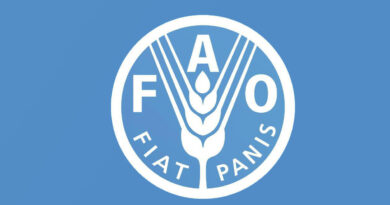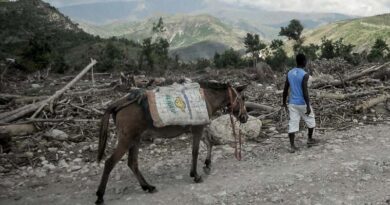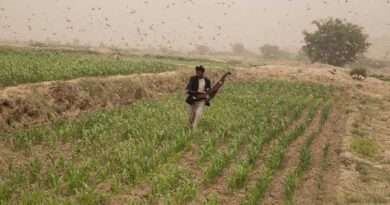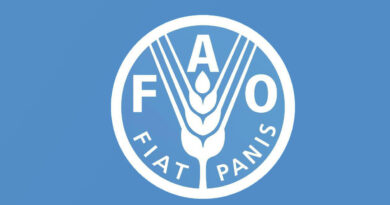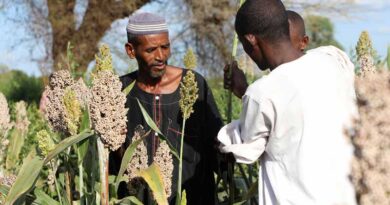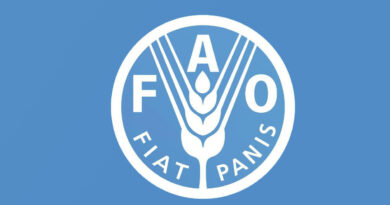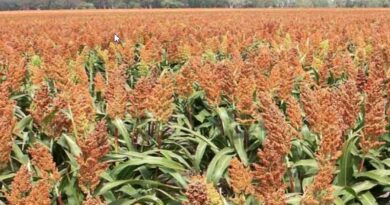First post quake assessment in Haiti finds hunger spike in affected areas
09 September 2021, Rome: As new data from Haiti showed last month’s earthquake has damaged agriculture and driven up hunger, the Food and Agriculture Organization of the United Nations today urgently called for more investments to help rural Haitians resume critical backyard gardening and small-scale farming and avoid a worsening of the food crisis.
The appeal came in response to a newly released Integrated Food Security Phase Classification (IPC) analysis showing that some 980 000 people in the four departments of the island nation that bore the brunt of the 7.2 magnitude quake — Grand’Anse, Nippes, Sud and Sud-Est areas – are now living with acute food insecurity. As the poorest country in the western hemisphere, Haiti has long been vulnerable on multiple fronts. But among the most recent factors to blame are the destruction in the quake of markets, rural roads, storage and processing facilities, dairies, and irrigation systems and additional damage brought by Tropical Storm Grace, which hit days after the seismic event.
Also Read: Haryana government to help farmers with timely supply of fertilizers
“On top of a succession of disasters and crises, this latest double whammy has left people’s ability to produce and to access food for their families and communities in tatters ,” said FAO Representative in Haiti, Jose Luis Fernandez. “With the October winter planting season just around the corner, we can’t wait to invest in rebooting agricultural production. That must happen immediately, but we are hampered by low levels of funding for this critical work,” he added.
Even before the August 14 earthquake, poverty, civil unrest, political and economic instability combined with recurring natural disasters and the effects of COVID-19 pandemic had made Haiti one of the world’s biggest food crises, with 4.4 million people in the country facing crisis or worse levels of acute food insecurity, as measured on the IPC scale (also known as high acute food insecurity).
Targeting those most in need
Sixty percent of rural Haitians rely on agriculture for their livelihoods. For the most resource-poor and vulnerable families, backyard food production is critical to their nutritional well-being.
FAO is calling for USD 20 million in new support to protect and restore the livelihoods of 32,000 highly vulnerable rural households (160,000 people) affected by the earthquake and tropical Storm Grace, which hit just days after the tremors ceased. The funds are also needed to rehabilitate the community agricultural infrastructure. Support planned includes:
- Crops and cash transfer: 15,000 vulnerable families (75,000 people) will receive vegetable and pulses seeds and agricultural tools, as well as technical support. They will also receive a cash transfer for the equivalent of USD 200 (USD100 /month) to cover their urgent needs while waiting for their crops to grow.
- Small livestock and fishery: 10,000 vulnerable affected households (50,000 people) will receive poultry and goats as well as emergency fodder and help setting up fodder banks. Veterinary support teams and mobile veterinary kits and services provided for 25000 domestic animals affected by the earthquake. Fishing equipment and technical support will help revive sea fishing and fish farming.
- Rehabilitation of agricultural infrastructure: 7,000 households (35,000 people) will benefit from the rehabilitation of agricultural infrastructure and processing facilities damaged by the landslides and the earthquake. This will help protect their assets and rebuild food production capacity while ensuring access to local products. Among the infrastructure to be rehabilitated will be irrigation canals, facilities for processing fruit, cassava, maize and peanuts, milk and fish.
Note for editors: The IPC is a global, multi-partner initiative – comprised of 15 UN agencies, regional organizations, and international non-governmental organizations – that facilitates improved decision-making through the provision of consensus-based food insecurity and malnutrition analysis.


